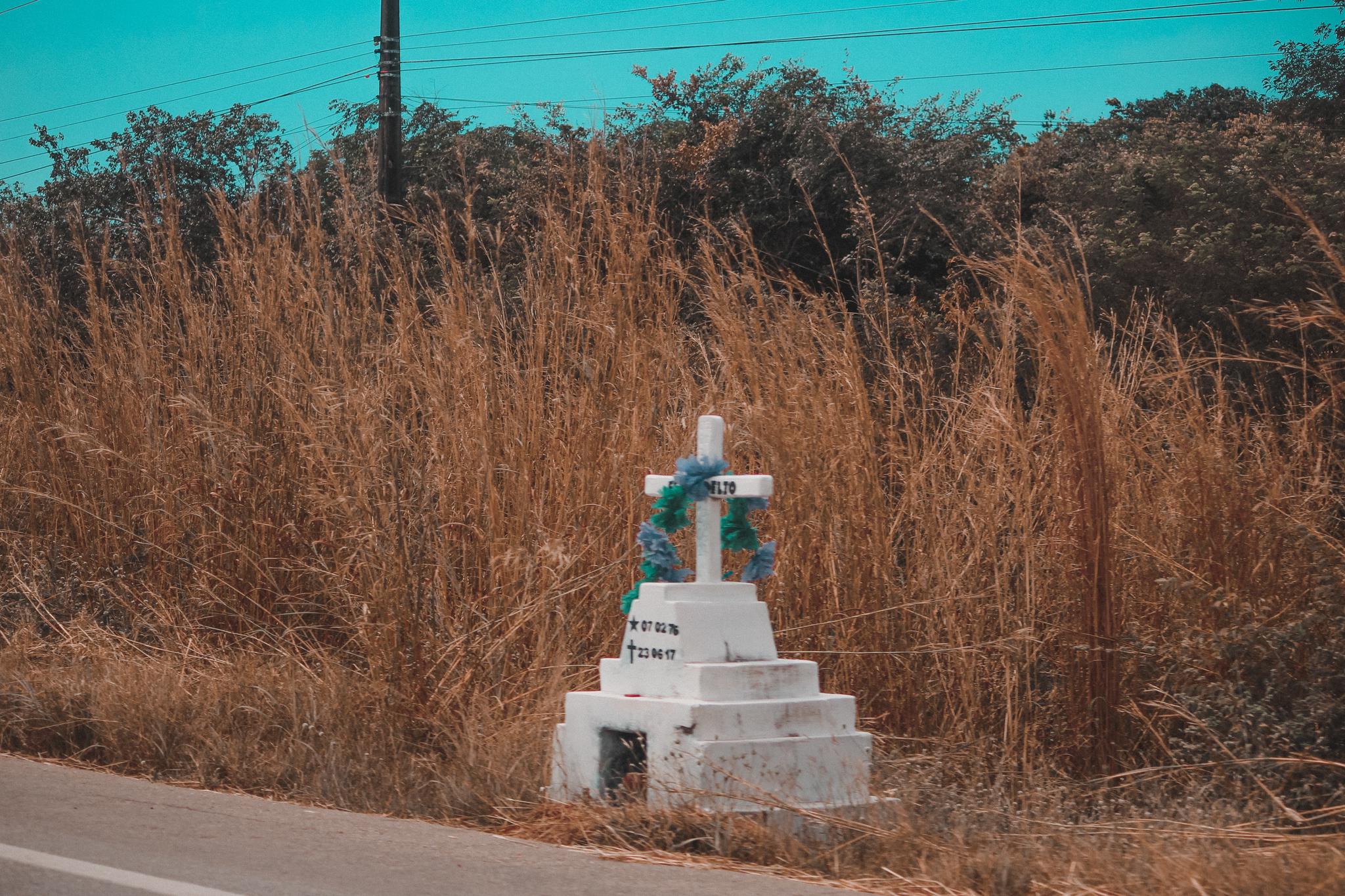Brazil's Deadly Small Town Family Feuds
Decades-long family feuds still haunt many small towns in Brazil's northeast interior
According to a reporter for the newspaper Diario de Pernambuco, as of 2014 there were five family feuds in smaller cities and villages in the northeast Brazilian state of Pernambuco in addition to other violent family feuds in neighboring states. Some feuds were active while others were supposedly resolved. Supposedly resolved because at any moment the feuds can start again.
Many of the feuds have killed over one hundred people each. One is more than 100 years old while others are younger yet still decades long. The long duration has obscured the origins of many family feuds that continue simply because of a cycle of vengeance.
The bloody family feuds of northeast Brazil’s interior, a region known as the sertão, are a result of an old frontier culture that never died. In the late 19th and early to mid-20th century, the sertão was dominated by roving bandits called congaços. Some became bandits because of desperate circumstances to improve the lives of their families in the harsh and semi-arid sertão. Other congaços took advantage of the upheaval to become permanent, big-time criminals.
While the congaço phenomenon changed over the decades, the key conditions that helped its rise have changed little. The Brazilian government has consistently underinvested in the sertão and not maintained a strong security presence to keep order. In the 1980s, 1990s and 2000s, this led to a rise in organized criminality and accompanying violence in the region whose perpetrators were dubbed neocangançeiros. The frontier culture of the congaçoeiros and neocongaçeiros -- of extreme masculinity, ubiquitous firearms use, and organized criminality -- is present in today’s family feuds.
According to Brazilian sociologist Dália Maria Bezerra Maia, while many fights in the sertão start due to conflicts over land, the macho culture of honor and vengeance in the region was just as large of a factor in decades-long family feuds. She quotes a member of a feuding family from a small town in the sertão who, in 2002, says no one knows why a decades-long family feud started in the first place. The implication is that the original cause of conflict no longer matters. The toxic macho culture is the limitless fuel for the enduring fight.
Bezerra Maia cites a study from 1970 about how young boys are brought up in this culture of toxic masculinity. The boys witness the aggressive conversations and behavior of their fathers focused on honor, vengeance and bravery. These fathers frequently wield firearms and train their boys from an early age in their use. Aggression and guns are part of raising boys. The study Bezerra quotes says in the sertão “a man without a gun is only half a man.” She quotes a study that calls the violent and aggressive culture the codigo do sertão, or the code of the sertão.
Unfortunately, there are plenty of guns in Brazil to make men whole. Until 2003 guns were easily bought in sporting goods stores with minimal bureaucracy. More recently, the Bolsonaro government has loosened restrictions on the sale of arms again. The illegal traffic of heavy weaponry also sends weapons to some feuding families.

Family feuds not only take lives but also incessantly threaten a family’s peace and normalcy. I spoke with multiple people involved in a decades long small-town feud in the sertão who discussed the extreme toll the feuds have taken on their families. Just like the town in Bazerra Maia’s research mentioned above, these people told me that no one is certain why the feud began. However, the thirst for vengeance lives from generation to generation and impacts all family members -- even those who wish to stay away from the fray.
One person lost a family member, Leo, at the hands of the son of a murder victim who was killed years earlier. The victim’s family was convinced Leo killed the victim because Leo and the victim previously had an intense argument. However, Leo’s family is sure he did not commit the murder. Suspicions often lead to vengeance killings which then lead to more vengeance killings. A vicious, inescapable cycle.
Moreover, the stress of family can consume and further harm a family. Leo’s death led to an immense amount of stress for another family member, Jorge. Jorge obsessed himself with avenging his family. He ultimately died of poor health -- perhaps partly stress induced from the murder of Leo -- before he could take revenge.
Many in Leo’s family, however, did not seek revenge but were greatly impacted by the loss of a family member. Despite wanting to stay out of the dispute, these family members lived in constant fear that they, too, could be ambushed and killed, victims of the family feud. Although the violence between families has calmed in recent years, it still scares family members. History shows that years of calm are followed by years of violence. Many of Leo’s surviving family members avoid a main drag in their small town for fear that violence could randomly break out. They fear not only for their immediate safety but of being implicated in a crime. They, too, could go the way of Leo.
When I spoke to people from families involved in the family feuds, they were very reticent to speak about the issue. They were afraid that details may identify them and their families and reignite the dry kindling. I obscured the identities and locations for this very reason. One person with whom I spoke has a cousin who, out of interest in the origins of the violence throughout the sertão, has read extensively on the topic. He, however, says he is too scared to ever write about the violence. Again, the chance of reigniting the violence, however slim, is too great.

Where the state is present it is often controlled by those in government. In the town of one person I spoke with, the two main families involved in the feud also have taken turns controlling the local government through the years. Politicians are frequent targets of assassination. As such, it is very difficult to use state power to stop violence when the aggressors capture the state itself.
In other areas of the sertão, the state’s attempt has been met with deadly resistance by the feuding families. In the small city of Patos 2011, the government began cracking down on the violence which led to death threats against judicial authorities. The families were investigated for violence against each other, the formation of criminal gangs who used military style offensive weapons, and drug trafficking. After years of investigation and prosecution, the main players in the feud were finally found guilty in court and sentenced in 2015 which “put an end to the feud [and violence],” as the news site G1 Paraiba stated.
The sociologist referenced above, Dália Maria Bezerra Maia, started her research to understand how it was possible for the small town in the sertão to be so violent. This is exactly why the violence in the sertão is shocking to someone who assumes cities -- especially in Brazil -- as the epicenter of violent culture. Brazil’s cities are indeed horribly violent. In 2018, Brazil had 17 of the 50 most violent cities in the world. Likewise, in the United States and the United Kingdom, violent crime is higher in urban areas.
Indeed, the violence in the towns of the sertão is probably less likely to cause a random death from stray bullets like in Brazil’s cities. One of the people from a small town ravaged by family feuds assures me that visiting her small town would be much safer than most of Brazil’s large cities. The violence of the sertão is targeted toward specific people in specific families. Additionally, the overall number of victims is far lower than in cities. The deaths get thrown into the statistics for a country that is consistently one of the most violent in the world and so the violence is obscured and overshadowed.
The violence of the sertão also shocks because of its apparent anachronism to a North American modern city-dweller. Deadly family feuds feel like the stuff of old mafia movies and Mark Twain novels not the 21st century. The family feuds are all the more anachronistic given how much Brazil has changed in the last half-century through mass urbanization, increased access to education and healthcare, and a higher GDP. Yet the feuds live on. These decades-long family feuds show us that if the underlying causes of violence do not change (aggressive masculine culture, easy access to firearms, and a weak state), the violence will not dissipate. The assumptions of what is possible in our supposedly modern world must never cloud us to the world’s reality.
